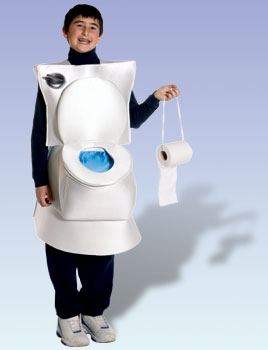
HAVE YOU EVER TRIED WALKING TO THE BATHROOM EVERY FEW MINUTES AFTER YOU CAME OUT FROM THE BATHROOM? FROM THAT ONWARDS, YOU WILL HATE THE BOTHROOM SO MUCH WHEN YOU USUALLY LOVE THE BATHROOM SO MUCH AS IT IS THE MOST PRIVATE SPACE YOU COULD EVER FIND. THE NEXT THING YOU WILL FIND IS THAT YOUR ASS KEEPS BURNING AND YOU WILL FEEL VERY TIRED AFTER WHAT YOU HAVE GONE THROUGH… BUT IT KEPT ON GOING WHERE YOU HAVE TO GO TO THE BATHROOM AGAIN, LISTEING TO THE HARMONIC MUSIC OF WATER FLUSHING…
It had been since this morning when I had diarrhea and I am feeling what I had not been feeling a long time ago, the tiredness of going to bathroom and so I thought on what I had consumed since yesterday. But what I had eaten since yesterday had been things that I regularly eating. But things might change, especially the cleanliness of the food itself and therefore I went on the net searching for a few information regarding diarrhea.
Diarrhoea is an intestinal disorder characterized by abnormal fluidity and frequency of fecal evacuations, generally result of increased motility in the colon; may be an important symptom of such underlying disorders as dysenteric diseases, lactose intolerance, GI tumors, and inflammatory bowel disease. Diarrhoea is the passage of watery stools, usually at least three times in a 24 hour period. However, it is the consistency of the stools rather than the number that is most important. Frequent passing of formed stools is not diarrhea. Babies fed only breast milk often pass loose, “pasty” stools; this also is not diarrhea. Mothers usually know when their child have diarrhea and may provide useful working definitions in local situations.
Types of Diarrhoea
1) Acute watery diarrhea (including cholera) which lasts several hours or days: the main danger is dehydration; weight loss also occurs if feeding is not continued;
2) Acute bloody diarrhea (also called dysentery): the main dangers are intestinal damage, sepsis and malnutrition; other complications, including dehydration, may also occur;
3) Persistent Diarrhoea (which lasts 13 days or longer): the main danger is malnutrition and serious non-intestinal infection; dehydration may also occur;
4) Diarrhoea with severe malnutrition (marasmus or kwashiorkor); the main dangers are: severe systemic infection, dehydration, heart failure and vitamin and mineral deficiency.
Why is Diarrhoea Dangerous
Diarrhoea causes rapid depletion of water and sodium – both of which are necessary for life. If the water and salts are not replaced fast, the body starts to “dry up” or get dehydrated. If more than 10% of the body’s fluid is lost, death occurs.
Treatment
In many cases of diarrhea, replacing lost fluid and salts is the only treatment needed. This is usually by mouth – oral rehydration therapy – or, in very severe cases, intravenously.
Diet restriction, to known well-tolerated foods, and the BRAT diet and its extensions, may be used for 1 to 3 days. However, limiting milk to children has no effect on the duration of diarrhea.
source: http://en.wikipedia.org/wiki/Diarrhea & http://rehydrate.org/diarrhoea/
It is best to see a doctor when you are facing diarrhea because it will be dangerous if it is not treated quickly. And this is the end of the diarrhea lesson today and I am going back to my bathroom again… chao!!!!

No comments:
Post a Comment